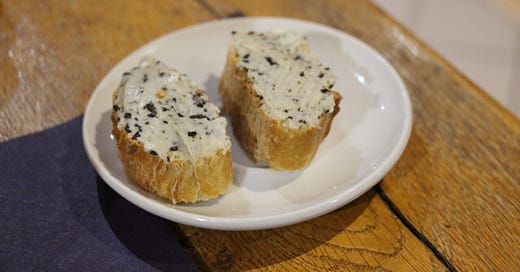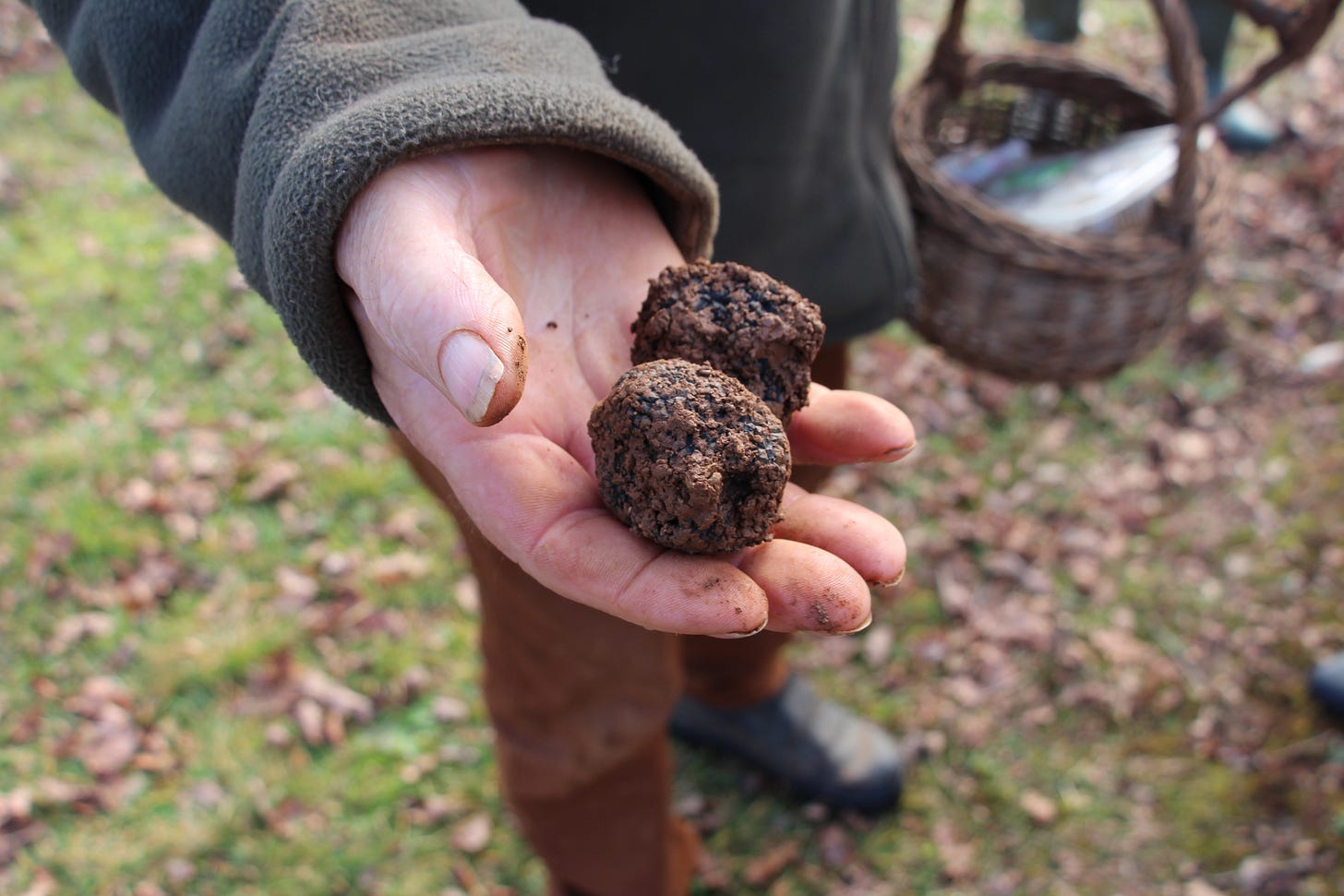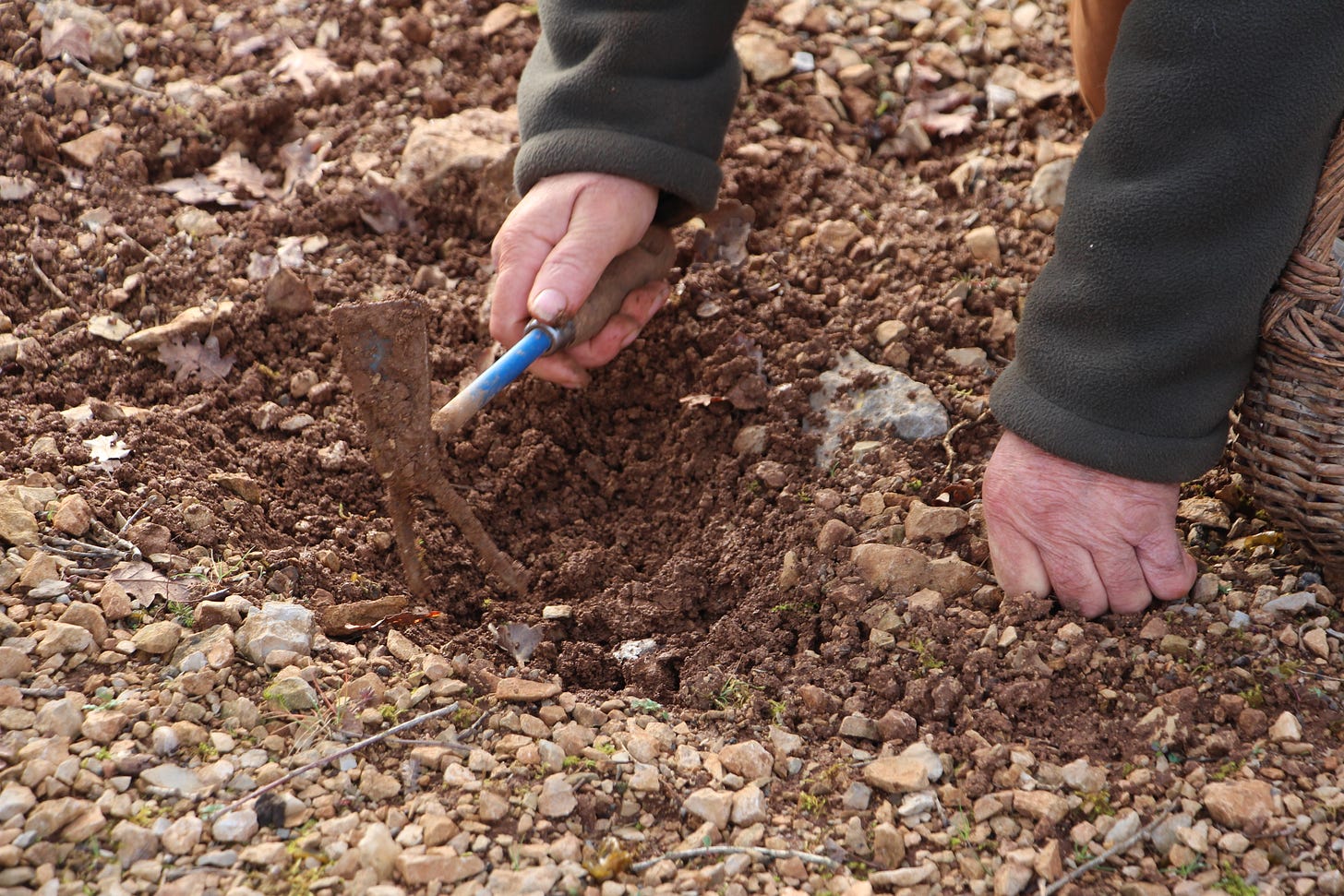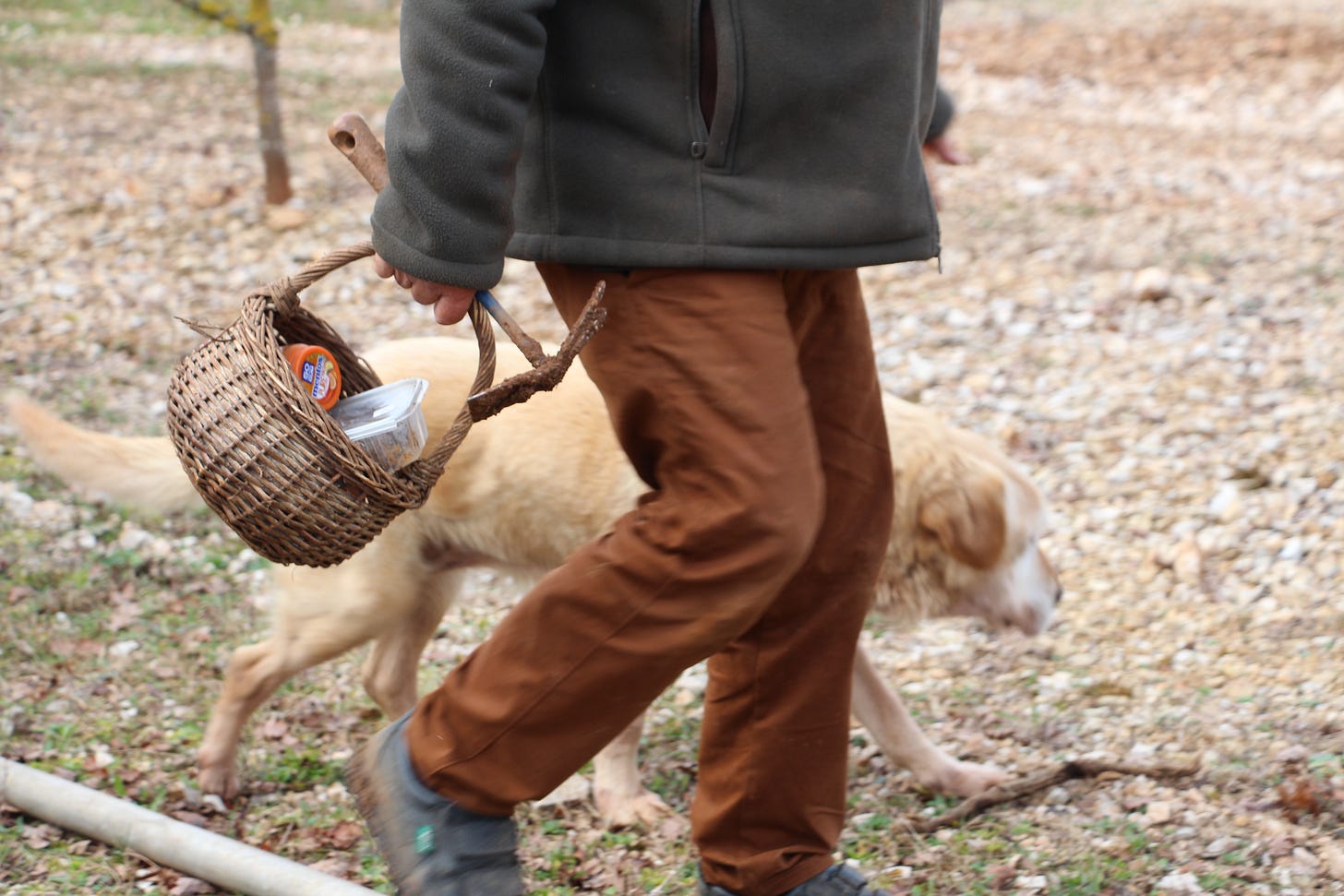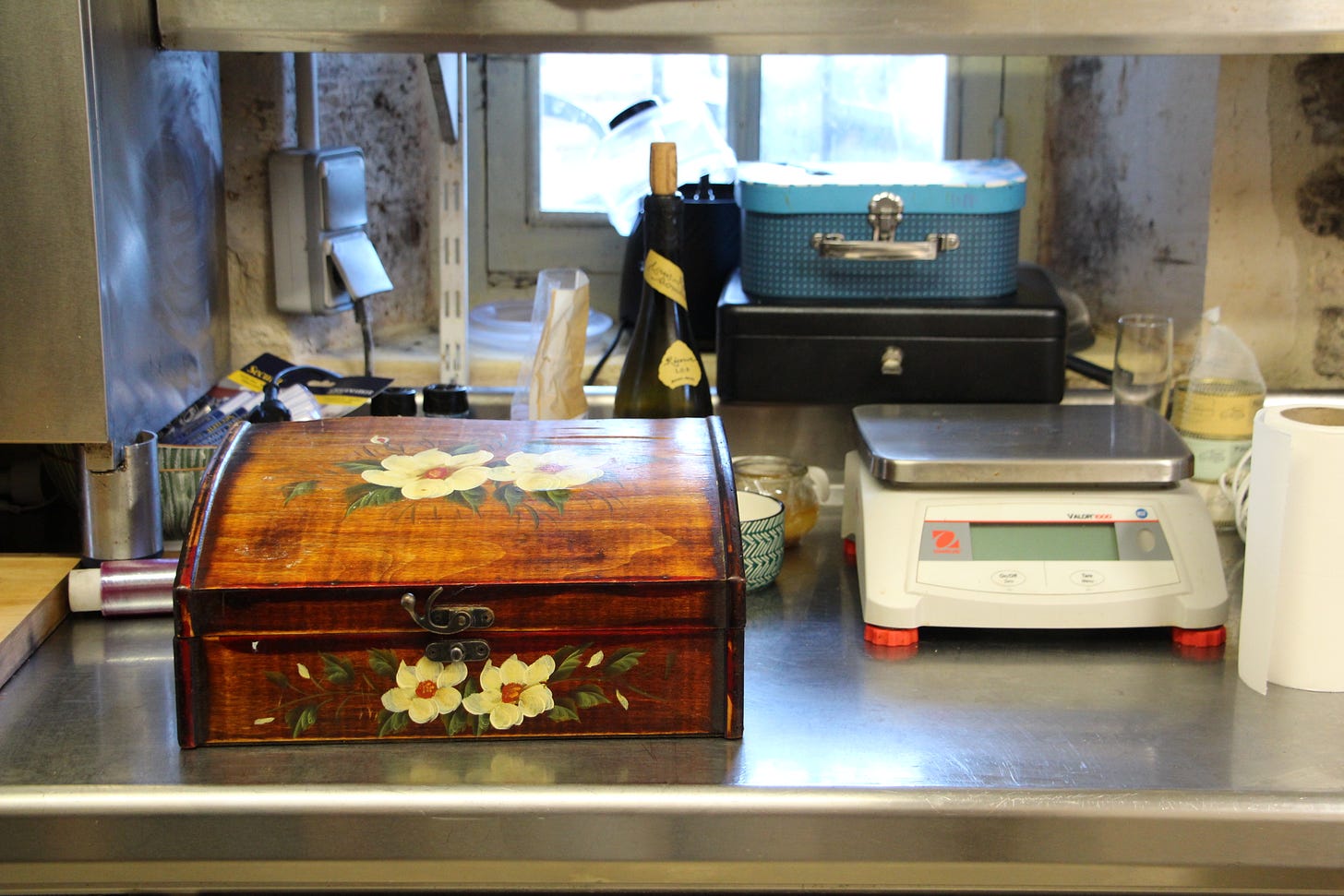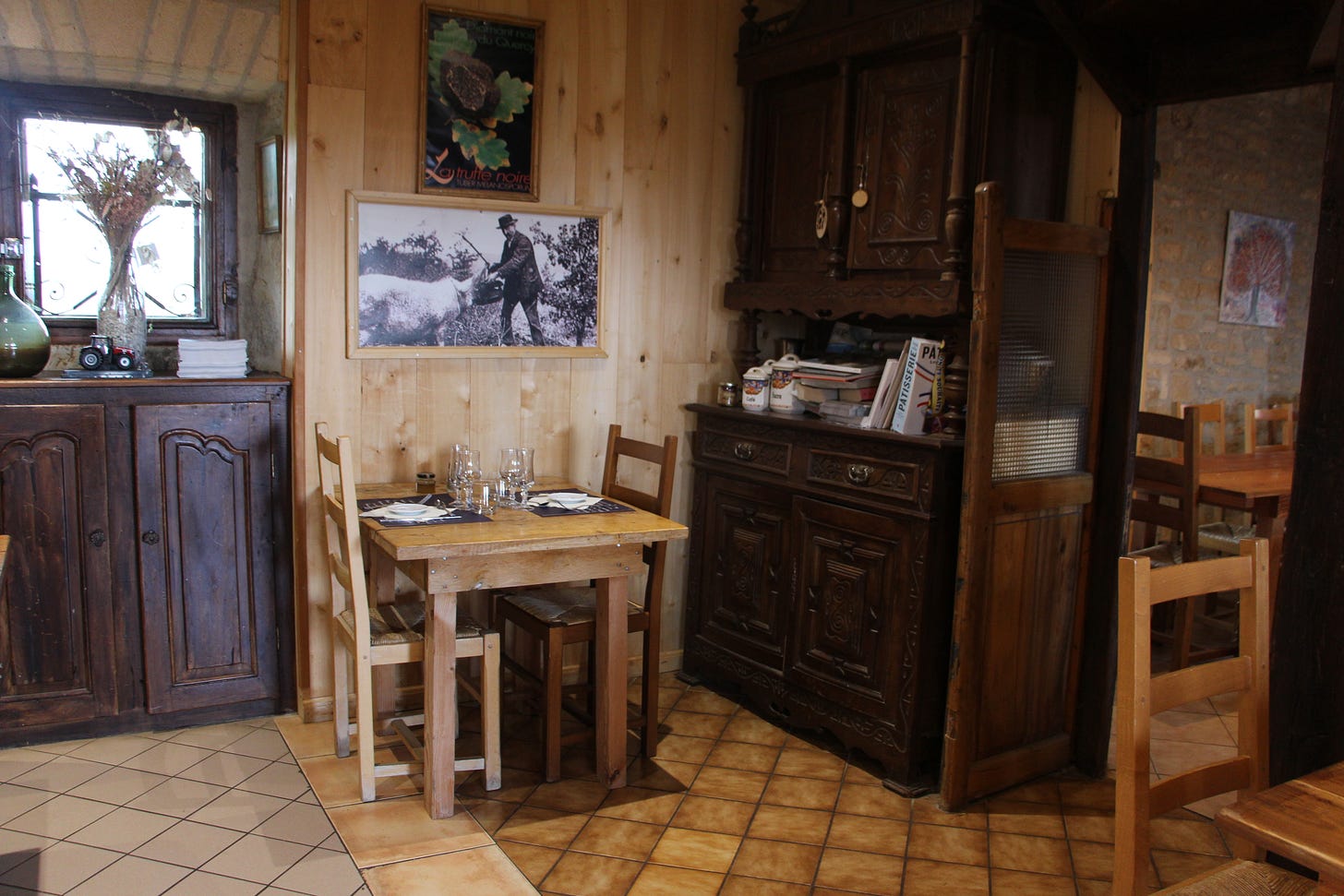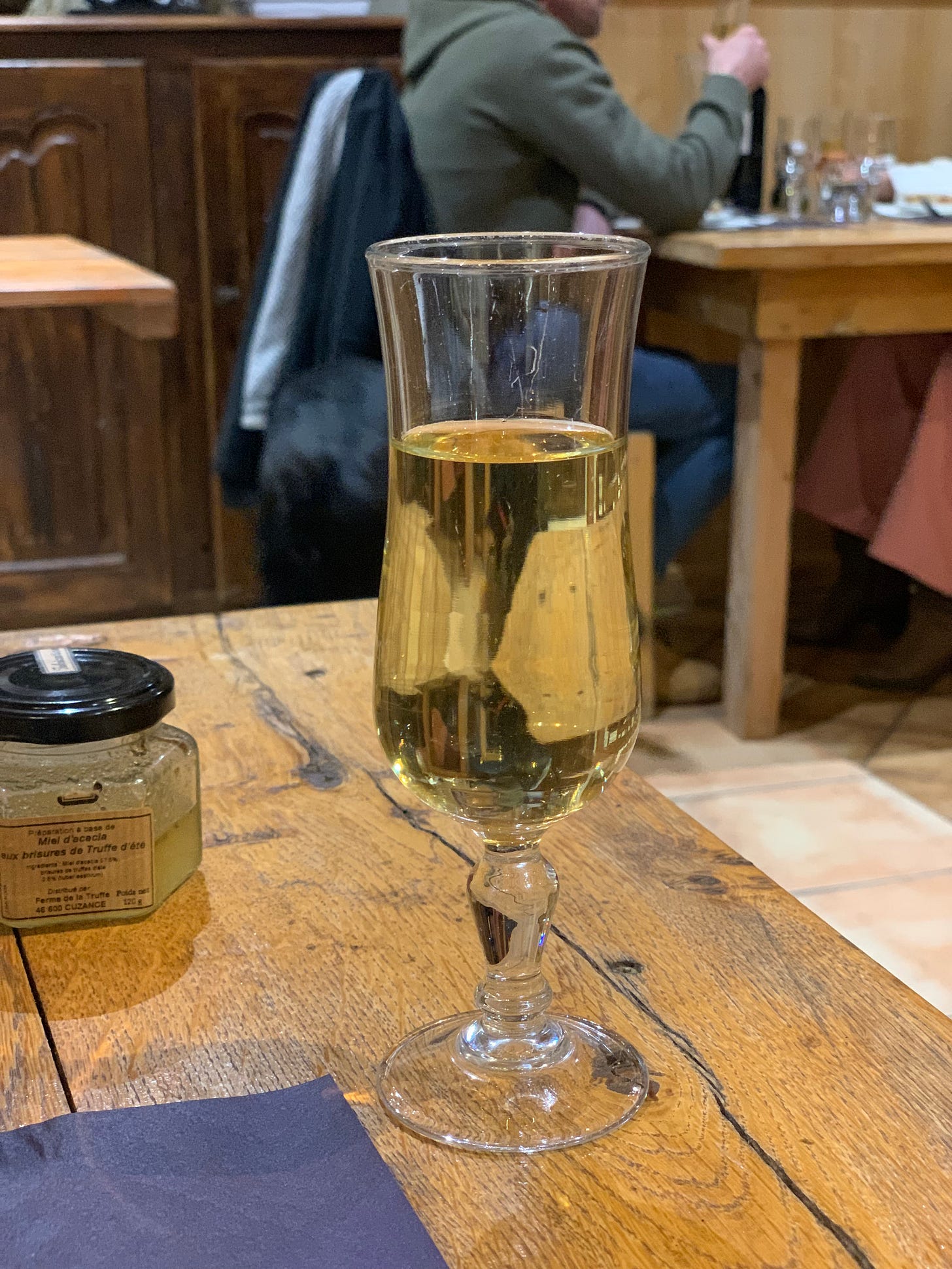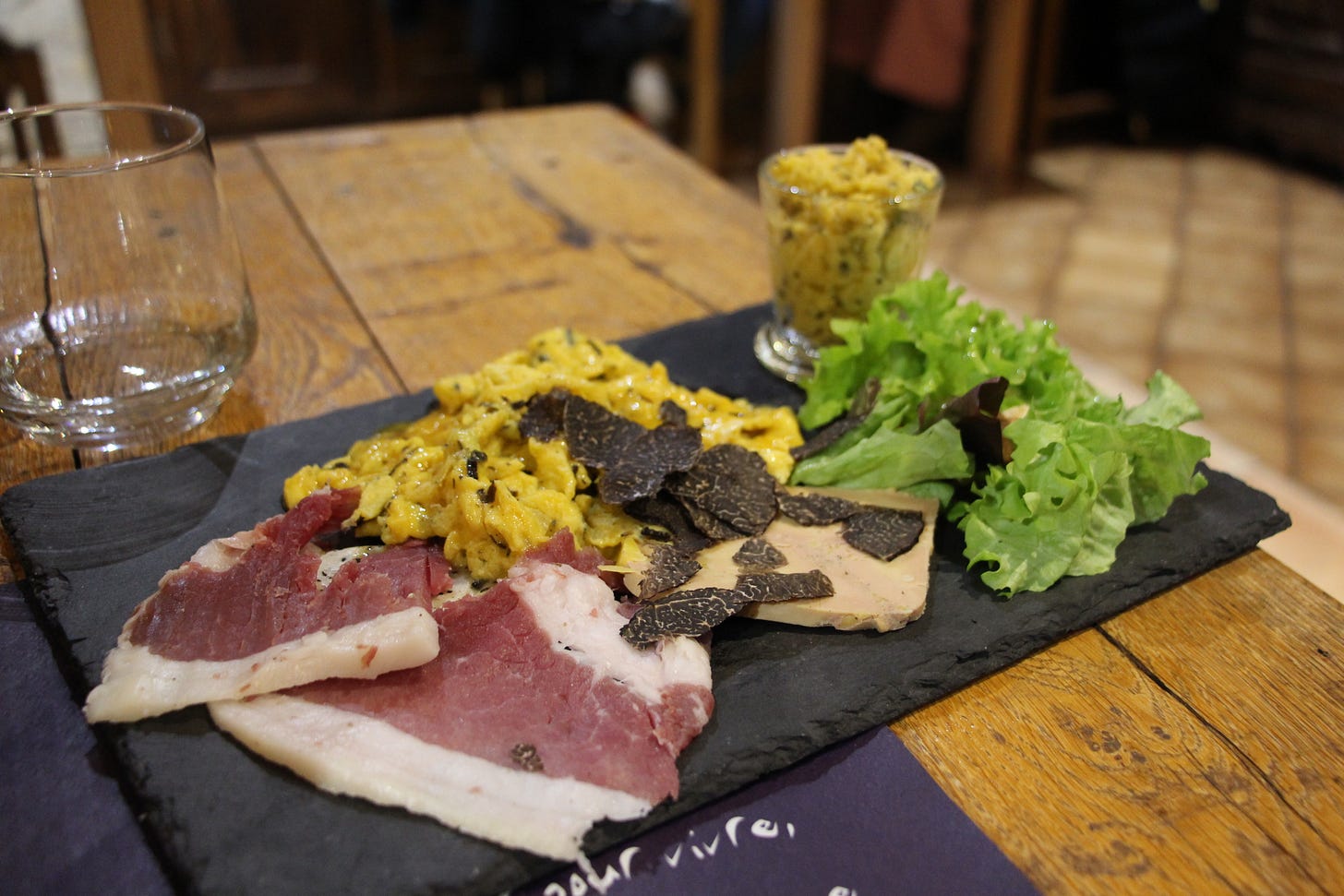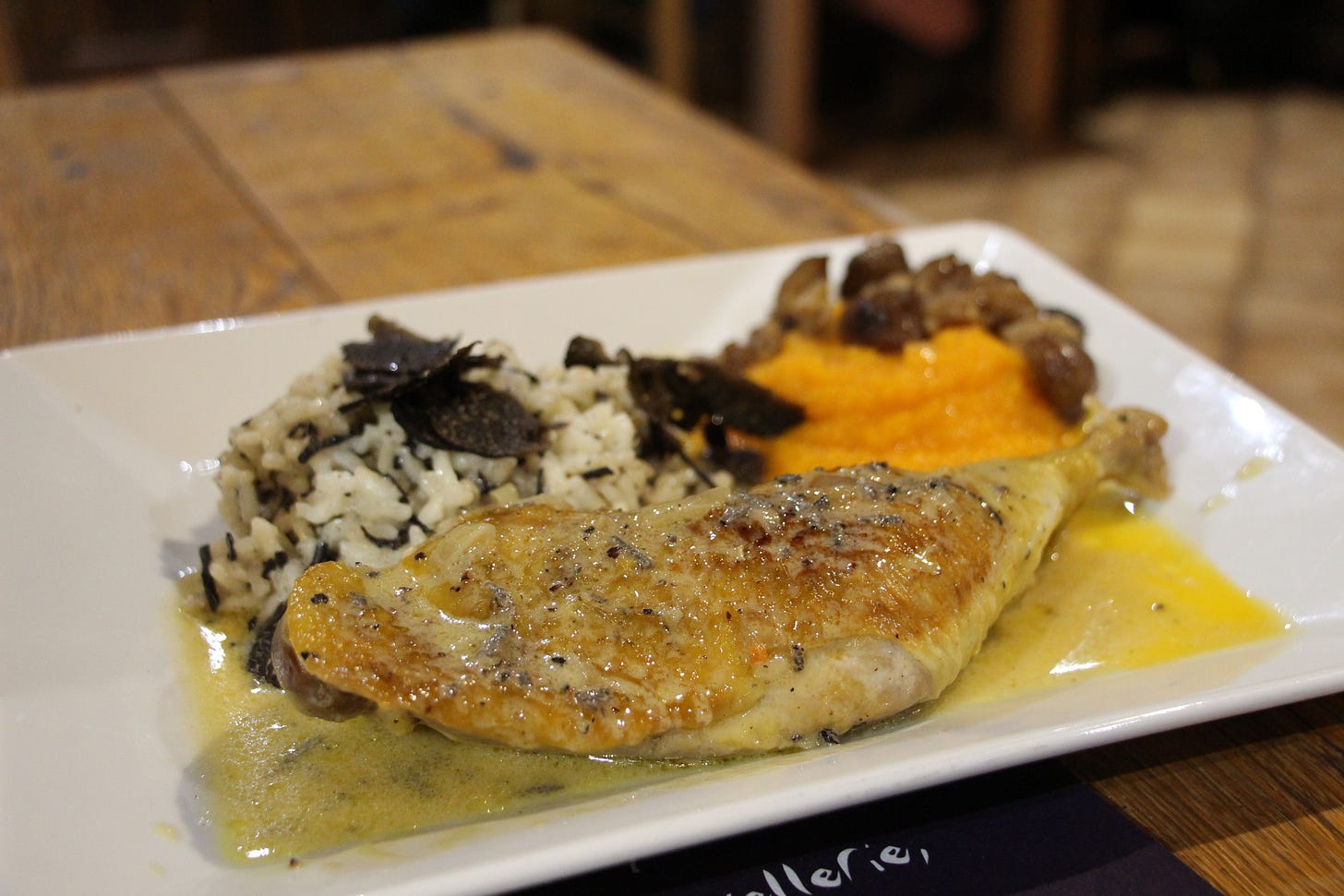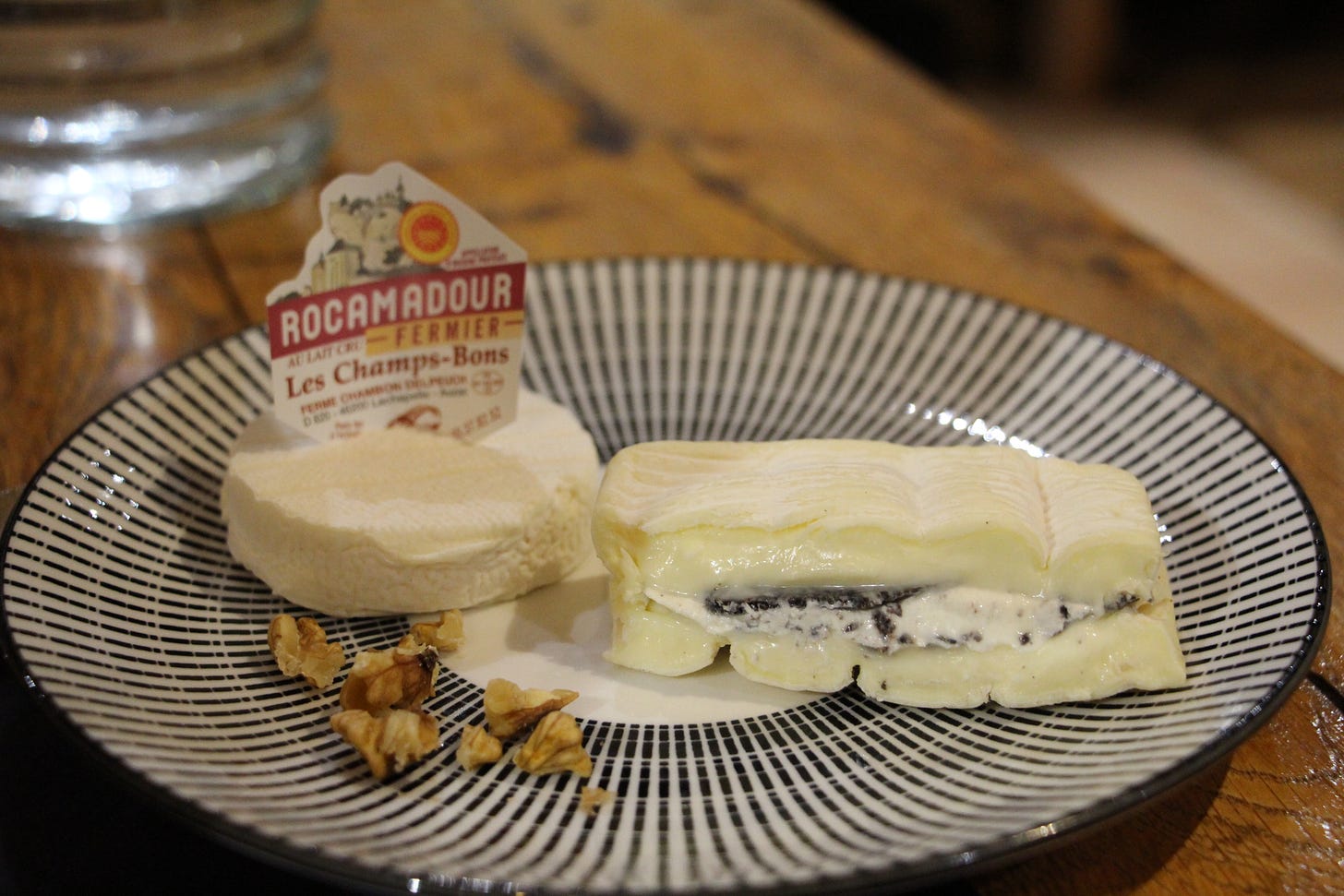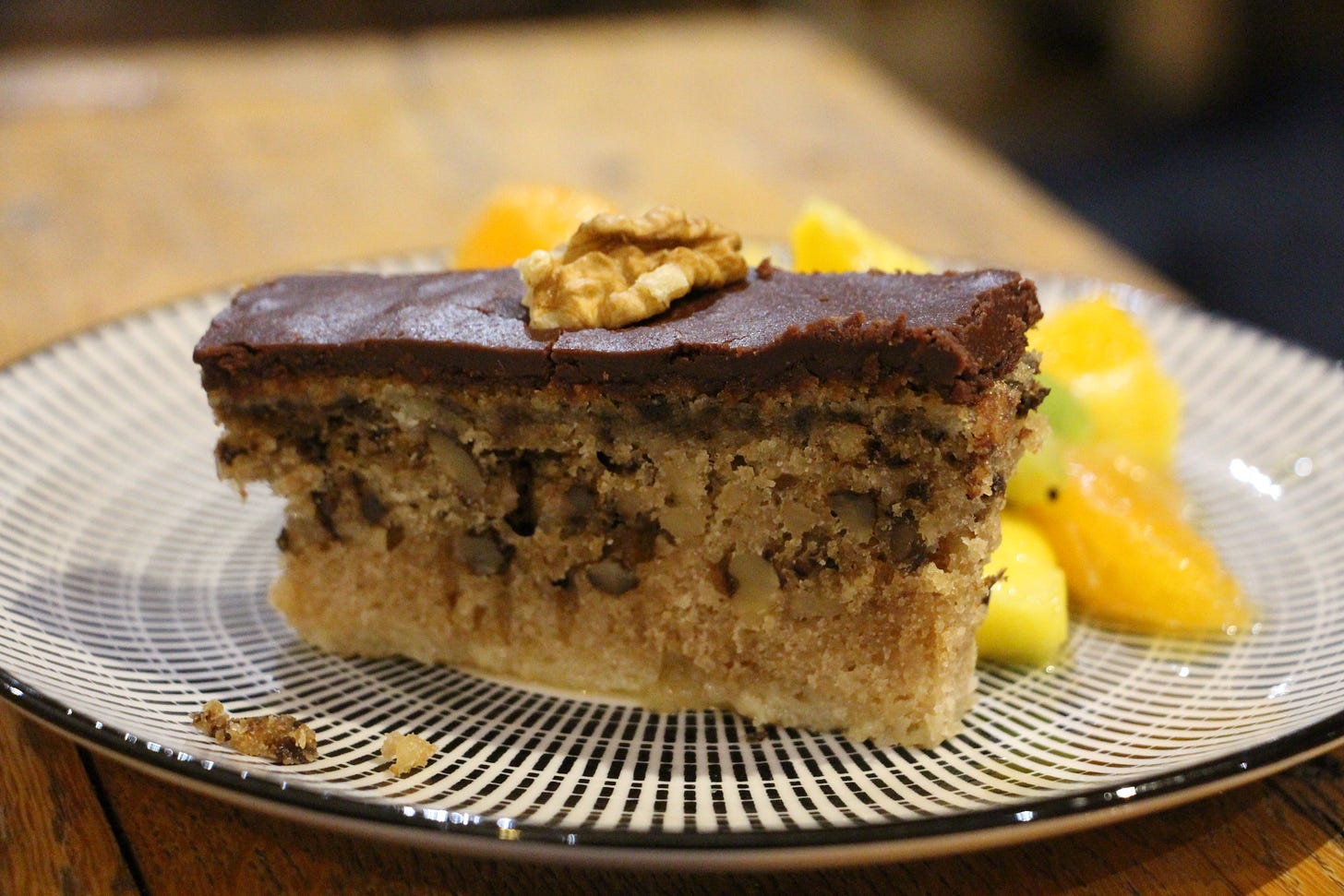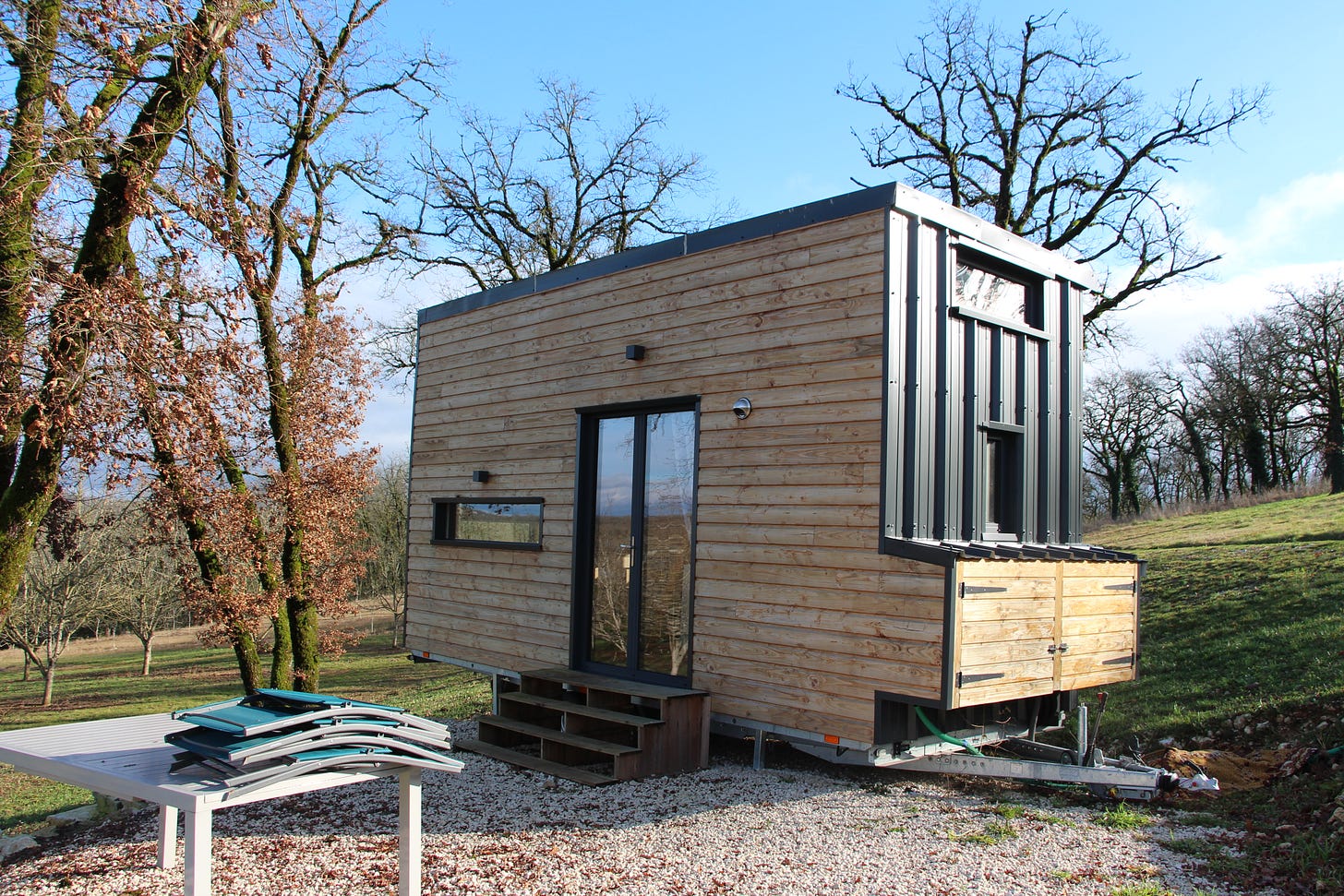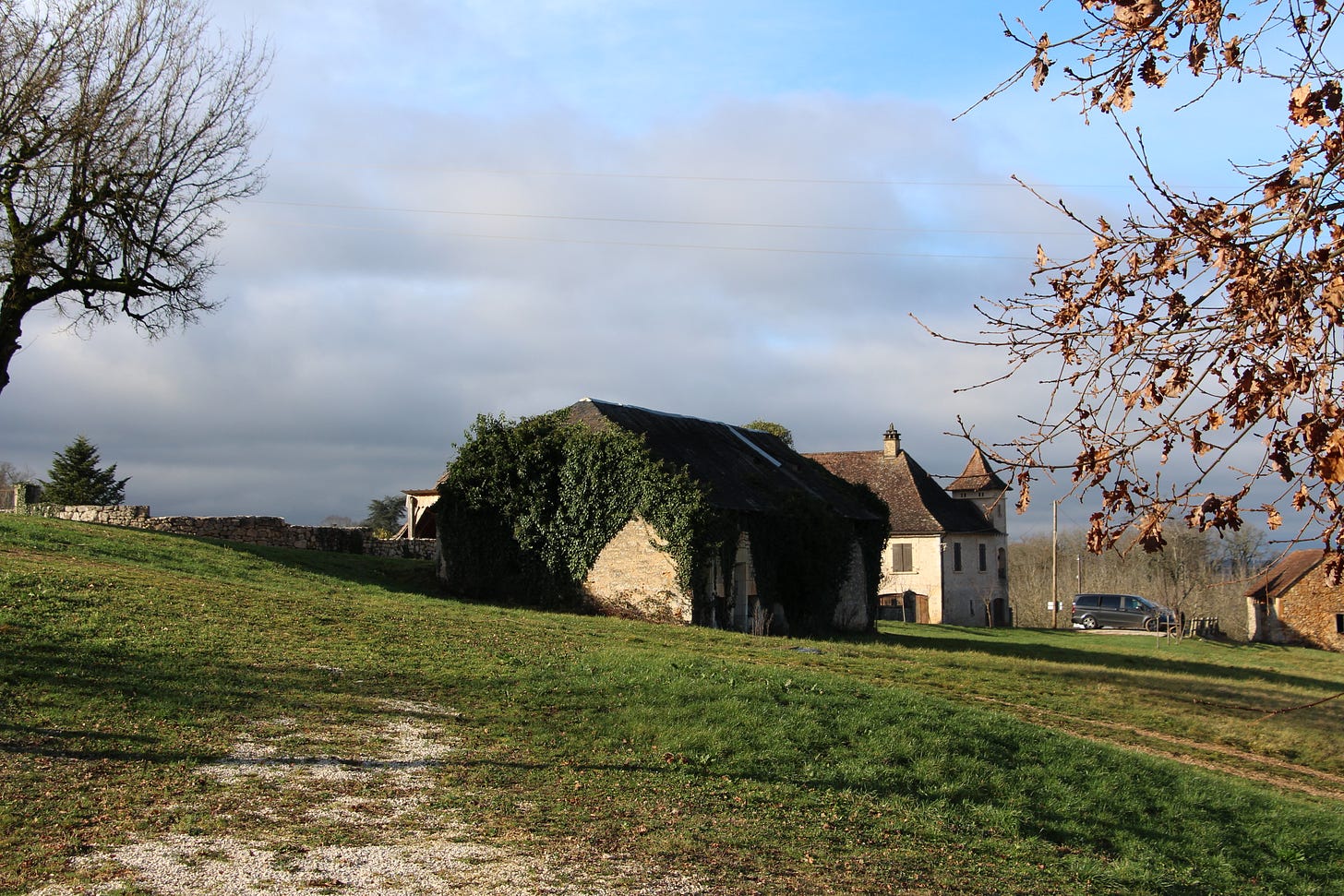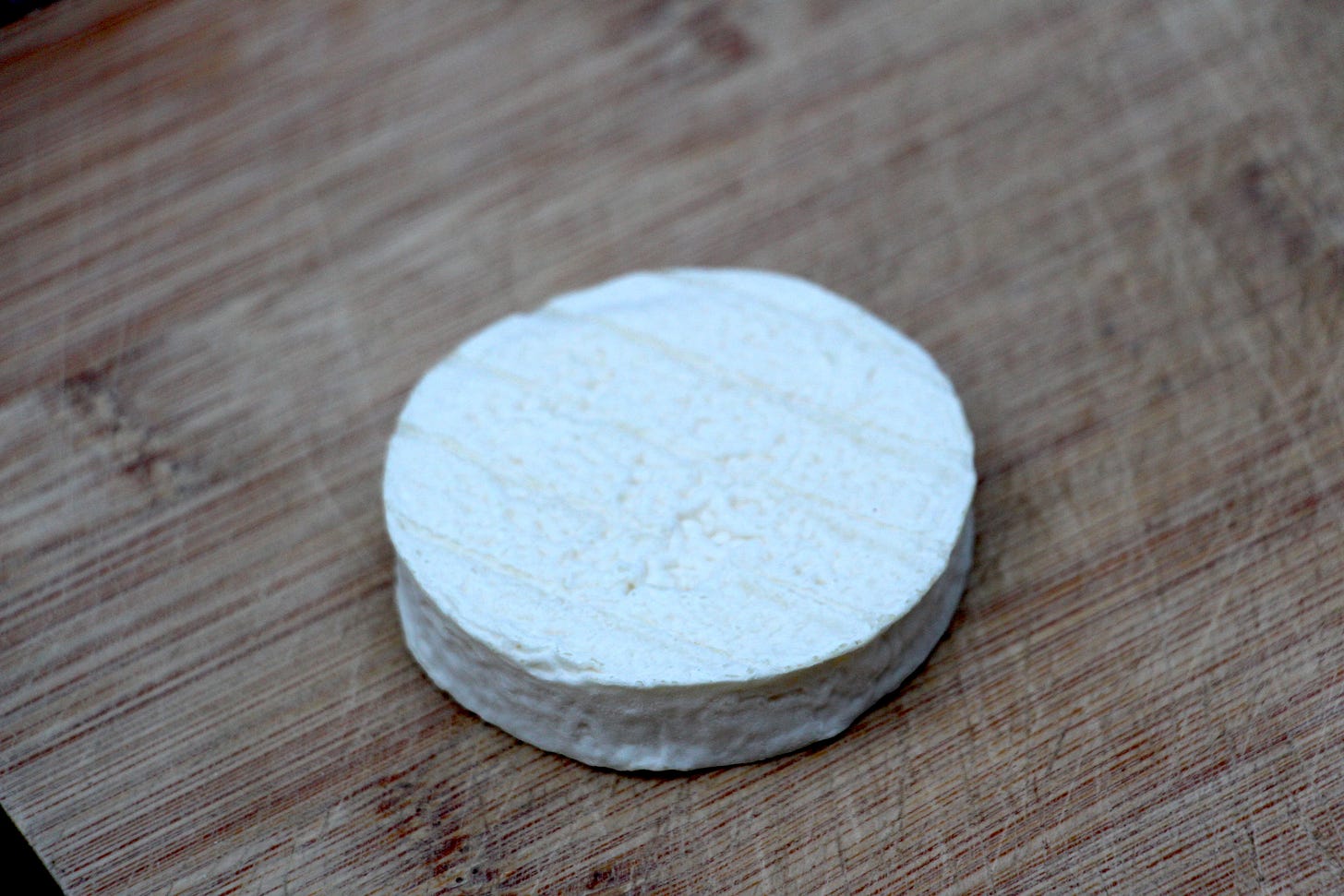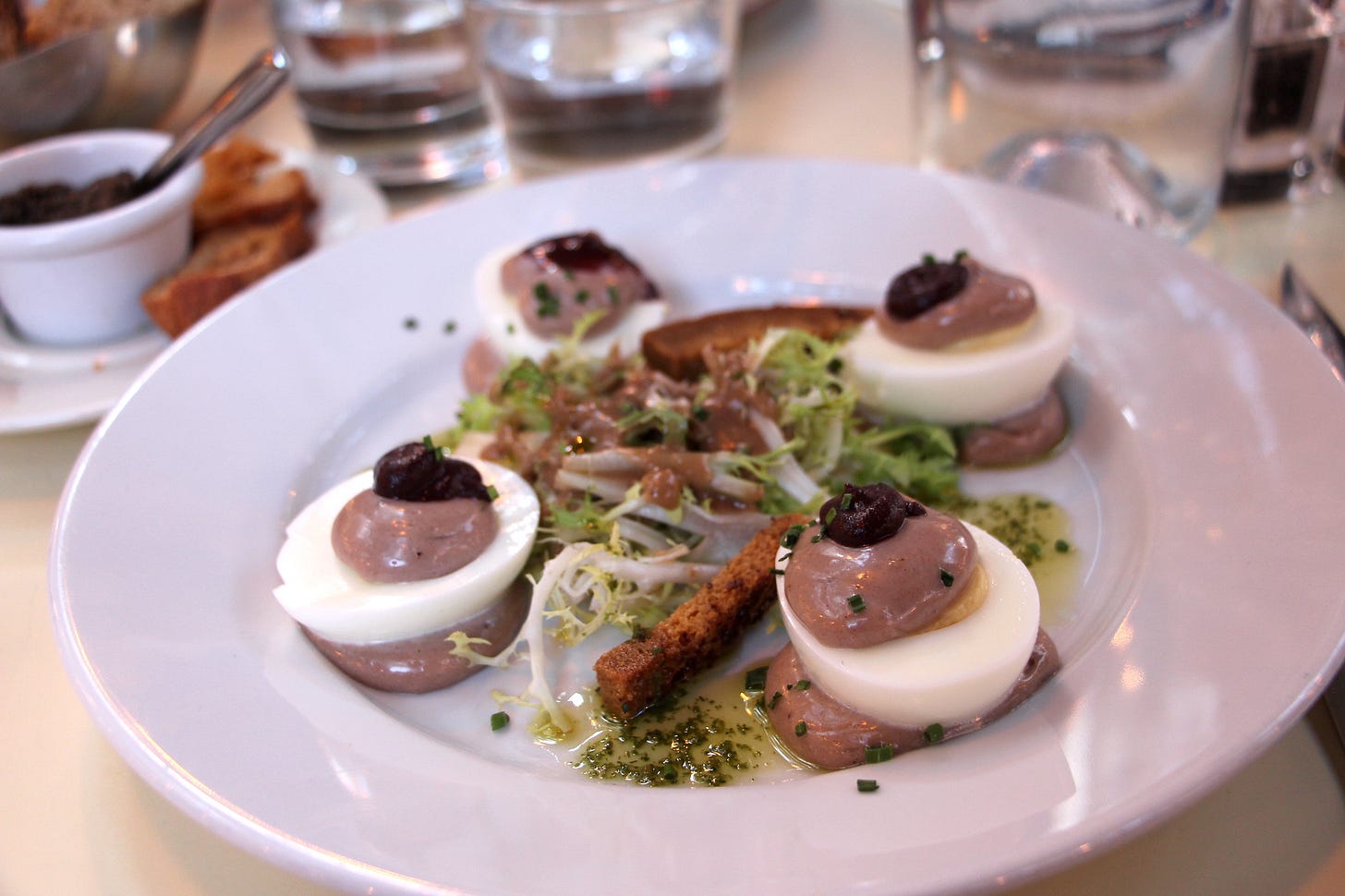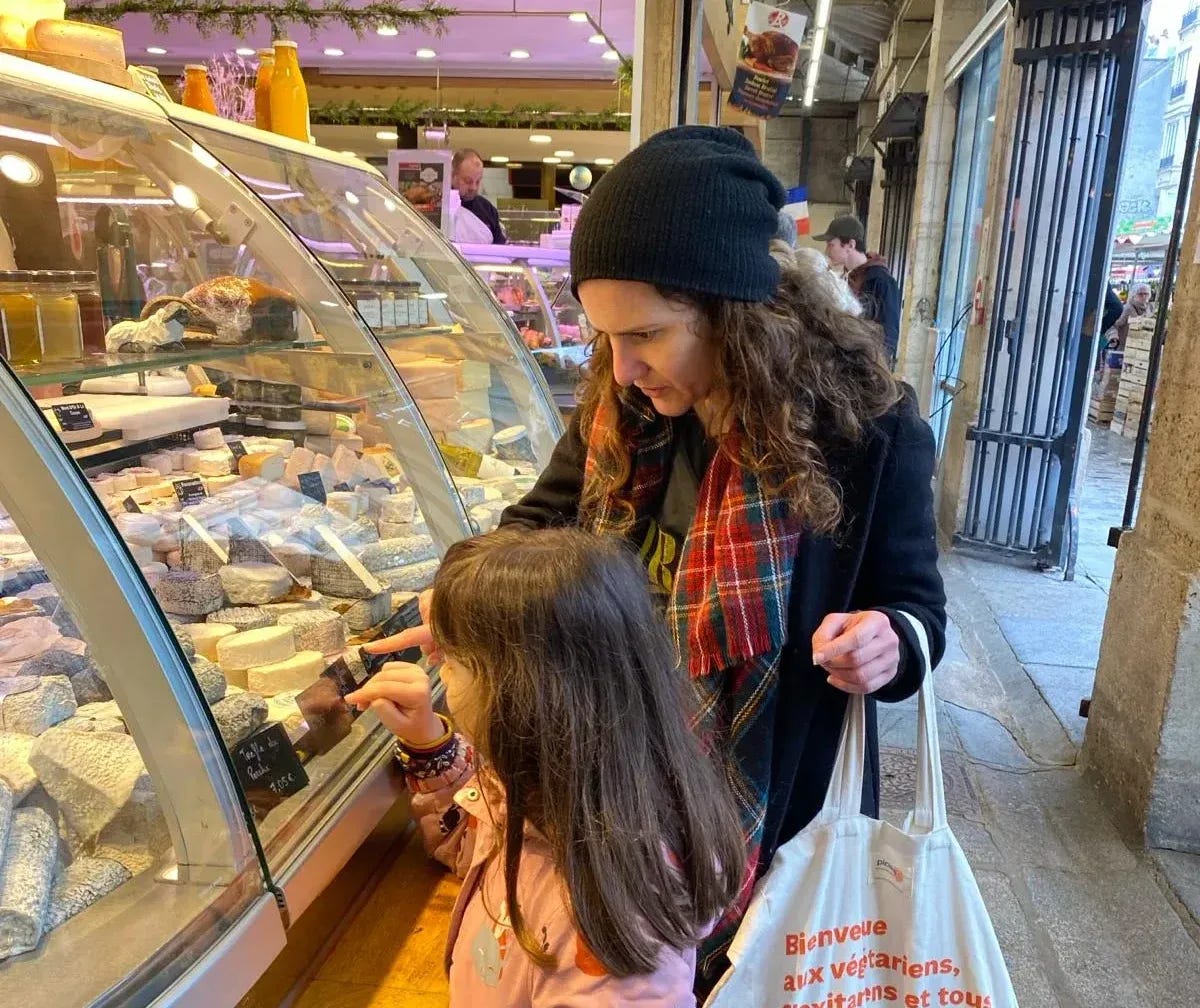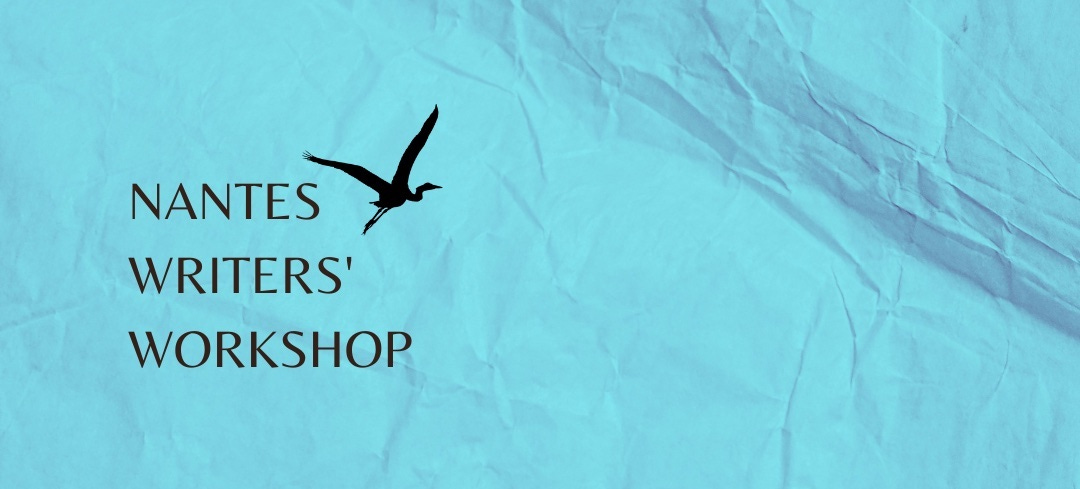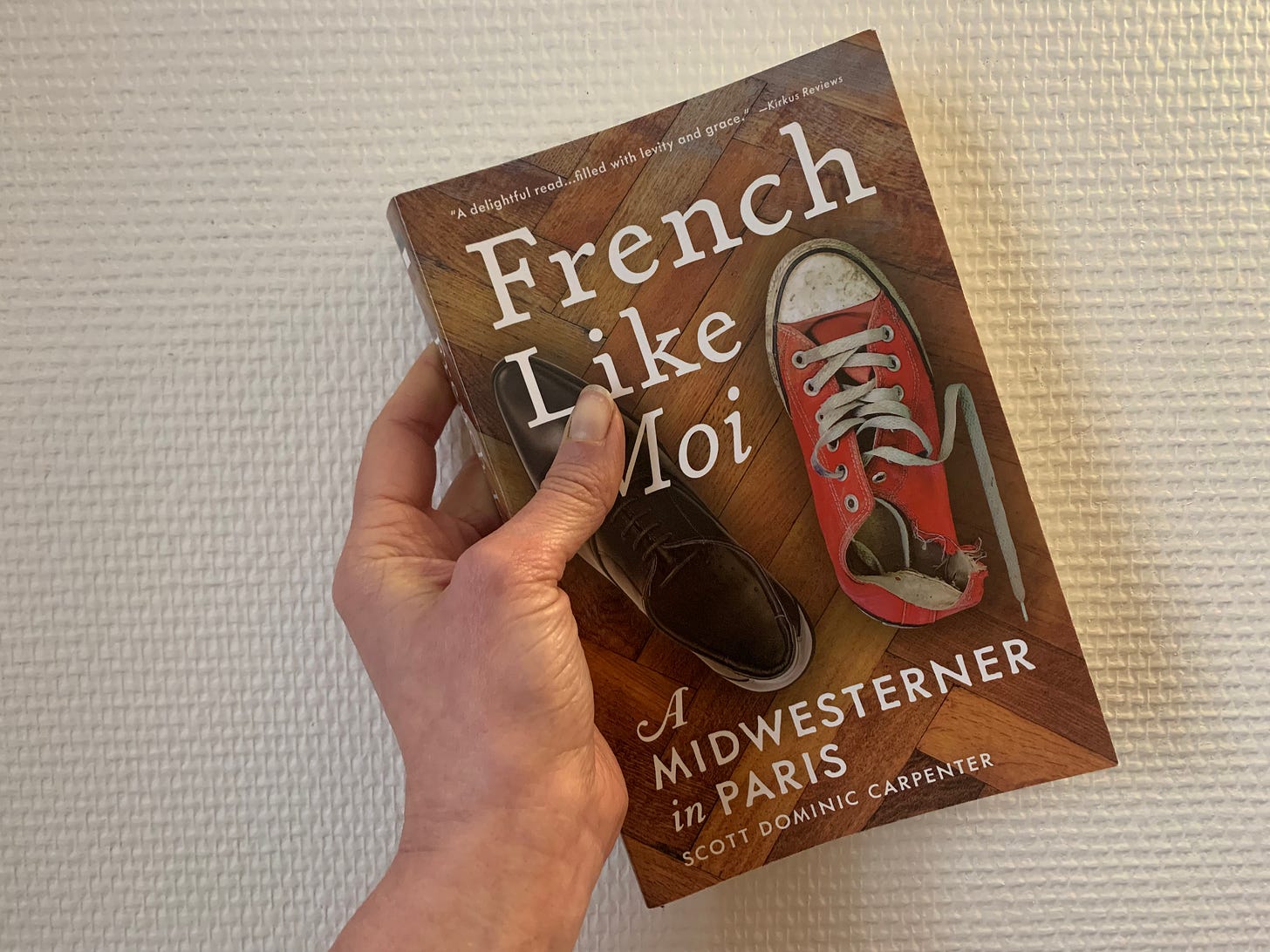Emily in France 🇫🇷 Discovering Black Gold in the Périgord – Part Two
Truffle fans, prepare to be bedazzled
When last we spoke, I had just dug into a succulent truffled Brie in Sarlat. But this was just the beginning of my truffle adventures in Périgord.
Trufficulture is a complex beast. To promote the growth of these aromatic fungi, special oaks need to be mycorrhized with Tuber melanosporum, aka black Périgord truffles, and then planted in areas where the sun easily reaches their roots. Then, it’s a waiting game: Several years might transpire before any truffles come to be… and you might never get any at all.
The Dordogne is nevertheless particularly well-suited to trufficulture, with its well-drained soils. The practice got its start here in the 19th century, rising to particular prominence after phylloxera wiped out local viticulture. These days, somewhere between four to nine tons of Périgord truffles are produced in the area every year.
La Ferme de la Truffe is a family-run business that sells both the truffles they grow on-site and access to the experience of digging them up. For just eight euros, you can join Serge or his daughter Delphine on a 1 1/2-hour discovery tour of their truffle oaks.
Fourteen-year-old Rosabella leads the charge to uncover the aromatic truffles, though participants can get their hands dirty digging them up.
A truffle-hunting adventure goes hand-in-hand with a simple tasting, but true truffle lovers will want to do as I did and prolong the bliss, dining and also sleeping on-site. This gave me the perfect opportunity to chat with Delphine about her no-waste approach… and to discover her beautiful “maceration cellar.”
Words cannot convey how extraordinary the aroma was when she opened this simple wooden box to reveal this wealth of black diamonds.
The dining experience at the Ferme de la Truffe stands out in more ways than one. Not only is the dining room as convivial as eating in someone’s home, with Delphine herself popping in and out of the kitchen over the course of the meal. But diners will also have to plan ahead a bit in deciding what they're going to eat in advance. This helps Delphine cut down on waste and ensure that each of the local products she uses is set to its best advantage.
The 55-euro set menu begins with two slices of baguette positively slathered with house-made truffle butter.
It’s served alongside the Aperitruffe, a house creation made by infusing truffles into local sweet white wine.
The appetizer platter is copious and proved to be my favorite part of the dinner. Delphine’s own cured ham is served in thick slices alongside a slab of foie gras and both truffled omelette and scrambled eggs. At first, I was unsure of the need for two egg preparations, but I found the difference in textures super enticing. After going back and forth a bit, I found I preferred the rich, creamy scramble.
A farm-raised chicken leg was served with a truffle-studded risotto and a side of squash purée with chestnuts, and this last bit of the plate – the only part without any truffle – was my favorite. The risotto was loose and far from as creamy as it should have been, and the chicken, while tasty, was a bit tough.
I’ll admit my disappointment continued into the cheese plate, when I found that the truffled “Brie” promised was actually an industrial supermarket cheese. But the Rocamadour, a local delicacy procured from a farm just up the road, was the best I tasted on my trip, and the farm’s own walnuts were a lovely touch.
I didn't really need dessert by the time it arrived. The walnut cake with seasonal fruit was perfectly fine, but nothing to write home about.
Still, I relished the experience of dining on site… and sleeping just steps away from the farmhouse.
The tiny house was decked out in everything I needed for the night and afforded the perfect views of the stars and the sunrise the next morning. And yes… I was up in time for sunrise.
Tune in next week to discover my last day in the region, wherein on my third attempt, I actually got to visit a Rocamadour farm and spent my final day exploring the first official “Most Beautiful Village” in France!
Cheese of the Week
Rocamadour is France's smallest AOP cheese, weighing in at just 35 grams, or a bit over an ounce. This raw milk goat’s cheese is nutty and just subtly goaty, perfect for those who think they don't like chèvre. A perfect Rocamadour has a creamy, fudgy interior and a very thin rind that should slip and slide easily over the thin creamline.
To discover more of my favorite cheeses, be sure to follow me on Instagram @emily_in_france, subscribe to my YouTube channel, and tune into the Terroir Podcast, where Caroline Conner and I delve into France's cheese, wine, and more one region at a time.
What I’m Eating
Chez Eugène doesn't need to be as tasty as it is, given its real estate on the bustling Place du Tertre in Montmartre. And yet this welcoming spot serves up generous French classics and an award-winning wine list alongside its incomparable views. More on the blog.
Where I’m Going
1. To my favorite covered market in Paris to offer another of my famous cheese tastings.
2. To finally check out Cornichon, a "neo-rade" in the 11th revisiting French comfort food.
3. To emcee what is sure to be a phenomenal open mic featuring poetry and prose in English and French at HOBA with the team at Version Originale.
What I'm Writing
1. Ever since absinthe was outlawed due to rumours it led to insanity, this simple drink has become the nation's go-to apertif. For the BBC. (This story is particularly dear to me, as it features comments from my friend Forest Collins, who left us suddenly and far too soon late last year.)
2. The good news is that GMO salmon is no longer commercially available — but consumers will still need to do their research if they want to find sustainable salmon. For Organic Authority.
3. From the archives: Michel Danneau was passionate about tomatoes – he cultivated over 1,000 varieties in his backyard garden. I recently got the news that he too has left us. I feel lucky he shared so much of his passion with me in this piece for Paste Magazine.
What I’m Doing
The Nantes Writers’ Workshop is coming back for the third time this June, from the 16th to the 20th.
The week-long workshop encompasses a two-pronged approach to sparking your creativity and honing your craft. Spend mornings with me generating new material with guided prompts inspired by the city of Nantes, and spend afternoons ensconced in an Iowa-style workshop with co-founder Anna Polonyi, an Iowa alum and professional creative writing instructor.
Applications are now open – we’d love to welcome you!
FAQs
With the goal of bringing you the content you crave, I've solicited your help. What questions can I answer for you? Drop them into the newsletter chat, and I’ll answer as many as I can!
What I'm Reading
1. French Like Moi is a fun romp through one teacher’s adventures in Paris. It pleasantly reinforces a lot of tropes of the genre, albeit with new insight. From run-ins with the police to pickpockets and adventures in everything from real estate to cheese shopping, this is a delightful read for anyone looking to explore the wonderful headache living in France can occasionally be.
2. This story about using potlucks to combat social isolation. In the New York Times.
3. This story on how U.S. agri-lobbies helped destroy a Green New Deal that would have substantially reduced pesticide use in Europe. In La Ruche Qui Dit Oui.
A bientôt !

